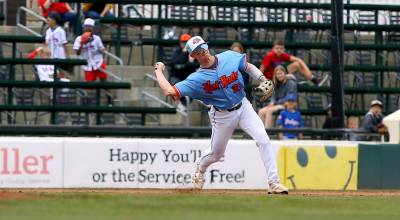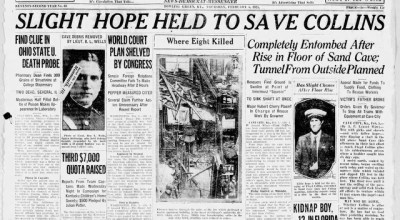Phasing in use of vaccine the best approach
Published 12:00 am Wednesday, January 1, 1997
President Bushs decision on a national plan for smallpox vaccination contained the surprise that he would be vaccinated, but not his family or most of his Cabinet members. That underscored Bushs message that biological terrorism is a deep concern, but there is no imminent threat of a smallpox attack. Most Americans are vulnerable to the deadly disease, and an attack could do significant damage to the nations health, economy and psyche. All that considered, the presidents plan to roll out vaccination in phases makes sense. Immunizations are beginning for military personnel, and will soon begin for thousands of public health officials who would be on the front lines if terrorists were to attack America with smallpox. After that, first responders police, fire, emergency medical technicians will be inoculated, on a voluntary basis. Finally, by spring, ordinary Americans will be allowed to take the inoculation if they insist on it. Its clear that the president doesnt believe most Americans should rush to be inoculated. Thats partly because, unlike other vaccines, this one carries real risks including the remote possibility of death. Thats one reason the program is being phased in. It will allow officials, who have not mounted a smallpox vaccination campaign in decades, to monitor those who are vaccinated for adverse reactions and any unexpected side effects. The vaccine is old produced in the 1970s and 80s but safe, officials say. A new batch, produced in a slightly different way, should be ready by 2004 for the general public. Officials expect about four in 10 health-care providers will volunteer for the first round of inoculations. Its likely that many of them will get sick enough to stay home for a day or two, and that alone creates logistical hurdles. There are other complications, too. Millions of Americans dare not take the vaccine because it could be dangerous, if not lethal, to them. Among those who will be discouraged from the vaccine are people with immune system problems or those taking medications that suppress the immune system. That is a long list, and includes those suffering from HIV infection; those taking drugs to prevent rejection of organ transplants; those being treated with chemotherapy and other drugs for certain cancers; those suffering from such disorders as Crohns disease or rheumatoid arthritis; and people with serious skin disorders. Unless theres an outbreak, children under 18 will not be vaccinated until further tests are done. Its not just the person getting the vaccine whos at risk. The inoculation creates a skin infection at the vaccine site. So for two to three weeks, anyone who has been inoculated could infect someone who comes in close contact. That means anyone who is immunized must also consider the potential risk to unimmunized family members at home. Bush is right to make the vaccine available to all Americans soon. If there were an attack, anyone exposed to the virus would have about four days to get the vaccine to be protected. But before people start lining up, they need to know the facts. A recent poll showed that two out of three Americans were willing to be vaccinated. But judging from focus groups conducted by the federal Centers for Disease Control and Prevention, those numbers could plummet when people are fully informed of the potential risks of the inoculation. Theres no reason to panic. But it is not too early to talk to your doctor about the vaccine, and decide under what conditions you and your family should take it. This is not a decision to be made lightly. Chicago Tribune




